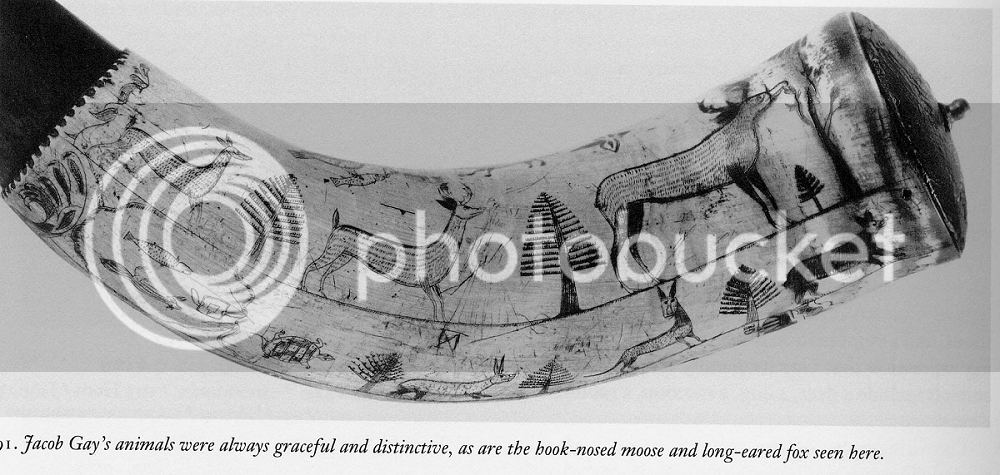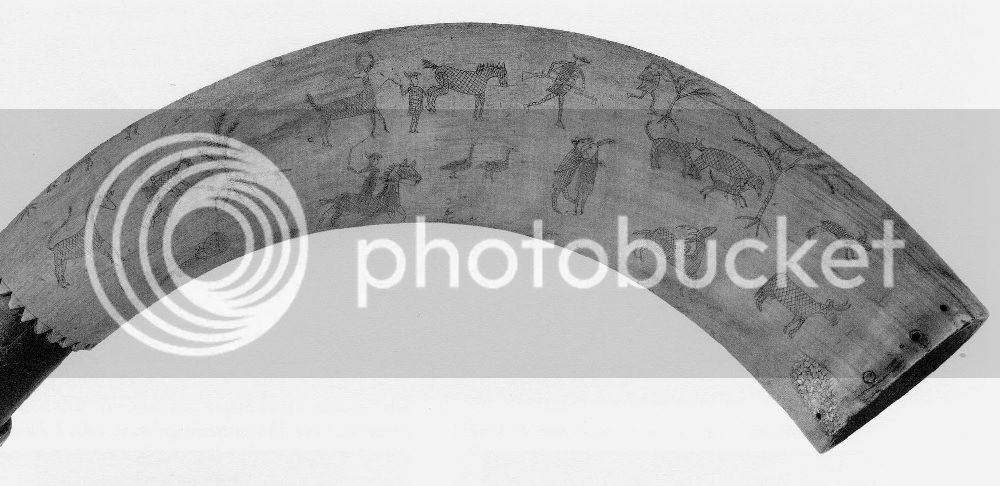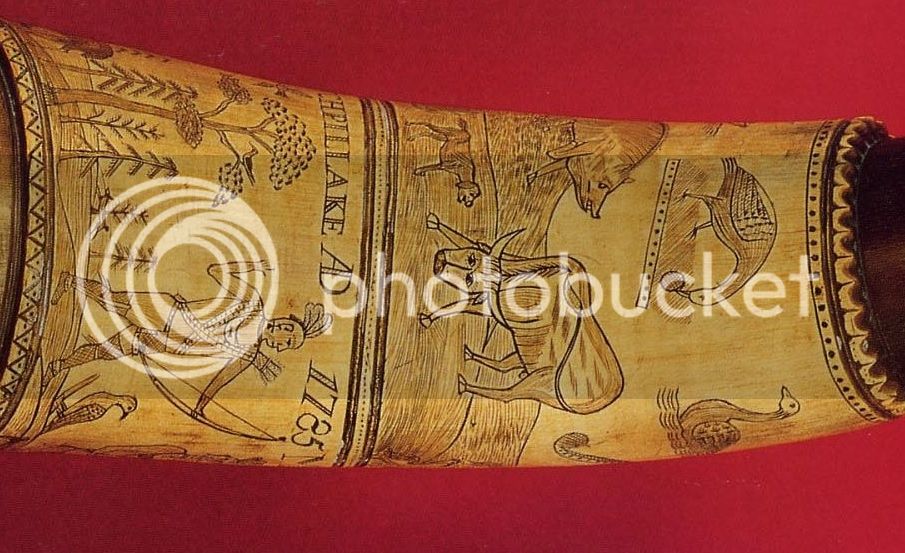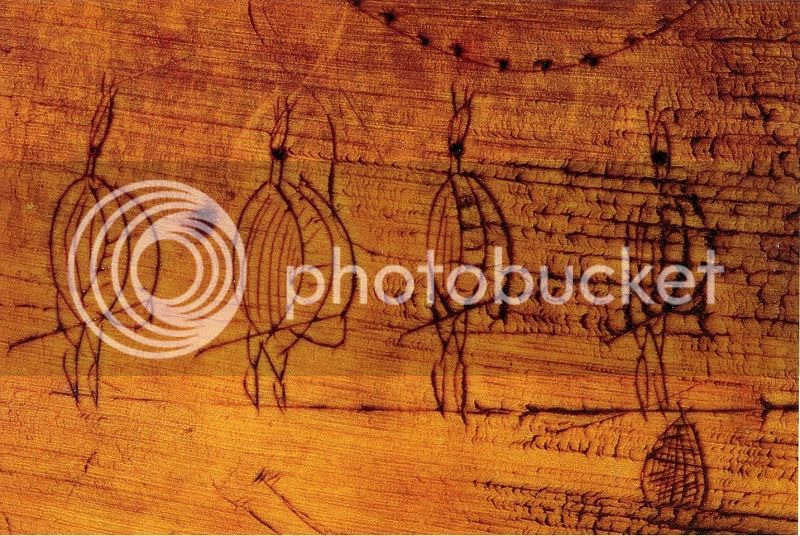Here are some examples of period work:

This is the Sherbourne Horn, engraved by Jacob Gay in 1776. Gay is considered one of the better artists, but, as you can see, he is not exactly photo-realistic. Picture is from the Book
Drums A'Beating, Trumpets Sounding, page 184.
Another from the same source, page 199, the John Abbot Horn from 1776:

Not quite as good as Gay. Engraver unknown, I believe.
Those two are probably the most typical of decent engraving found on period work. The next two show the very best and very crudest I can think of off the tope of my head.
This one is the Hezah Horn, from around 1785. This is about the best artistry I can recall seeing on a horn - perspective, a three-quarter view of an animal instead of profile, good attention to shading, etc. Calvin Hezah was the engraver, not sure if this was his personal horn or made for someone else.

The picture is from Dresslar's book on engraved powder horns, page 202. This next example is also from the same source, page 51.

This is the Abel Robbins Horn, dated 1756. This horn has a pretty interesting history, according to the family that owned it. Robbins was one of the unfortunate provincial soldiers killed at Fort William Henry, and the Indian who took Robbins' scalp also took the horn. The Indian was shortly thereafter killed himself, still bearing both horn and Robbins' red-headed scalp, and the horn became the property of one of Robbins' comrades, whose descendants kept the horn until 1988. As you can see, the engraving is about as crude as can be!
Point of all this being that period work can run from being very artistic to very crude indeed, but the average is usually pretty naïve. Most modern engraving I have seen is actually too good, or at least to photo-realistic, to look like period engraving.
 [/URL][/img]
[/URL][/img]








